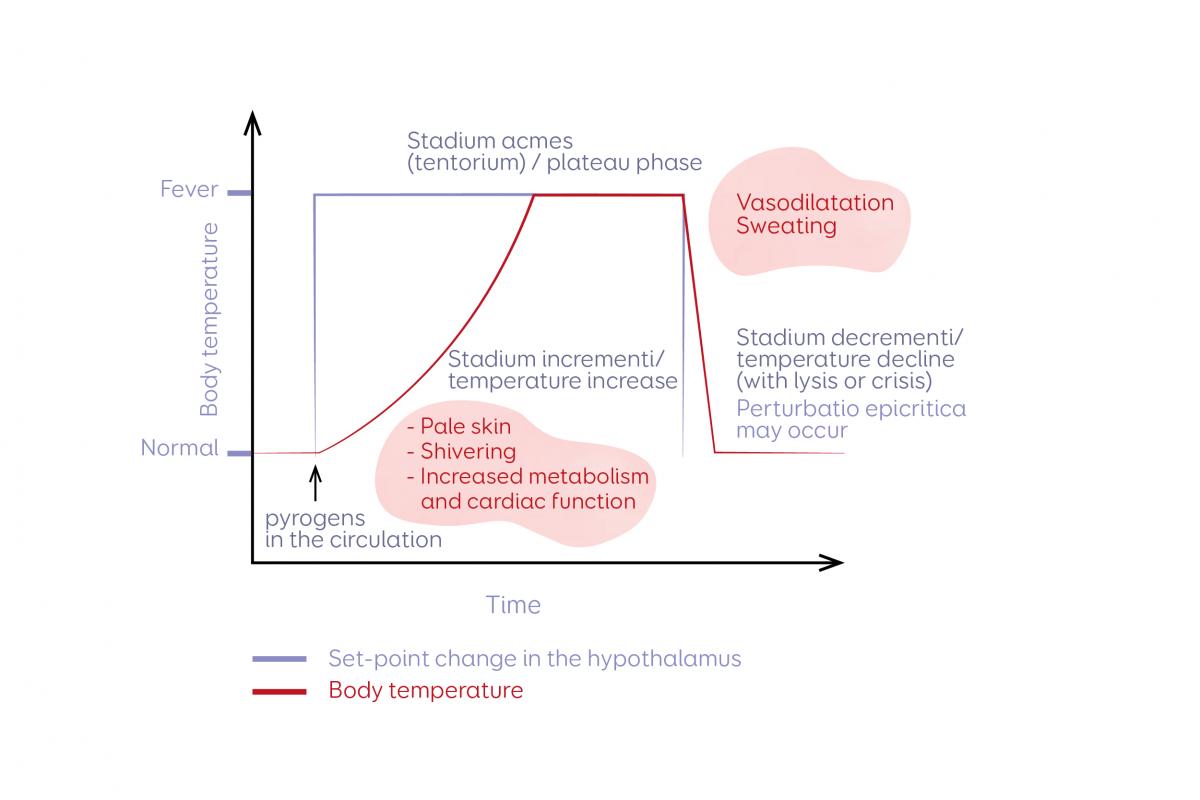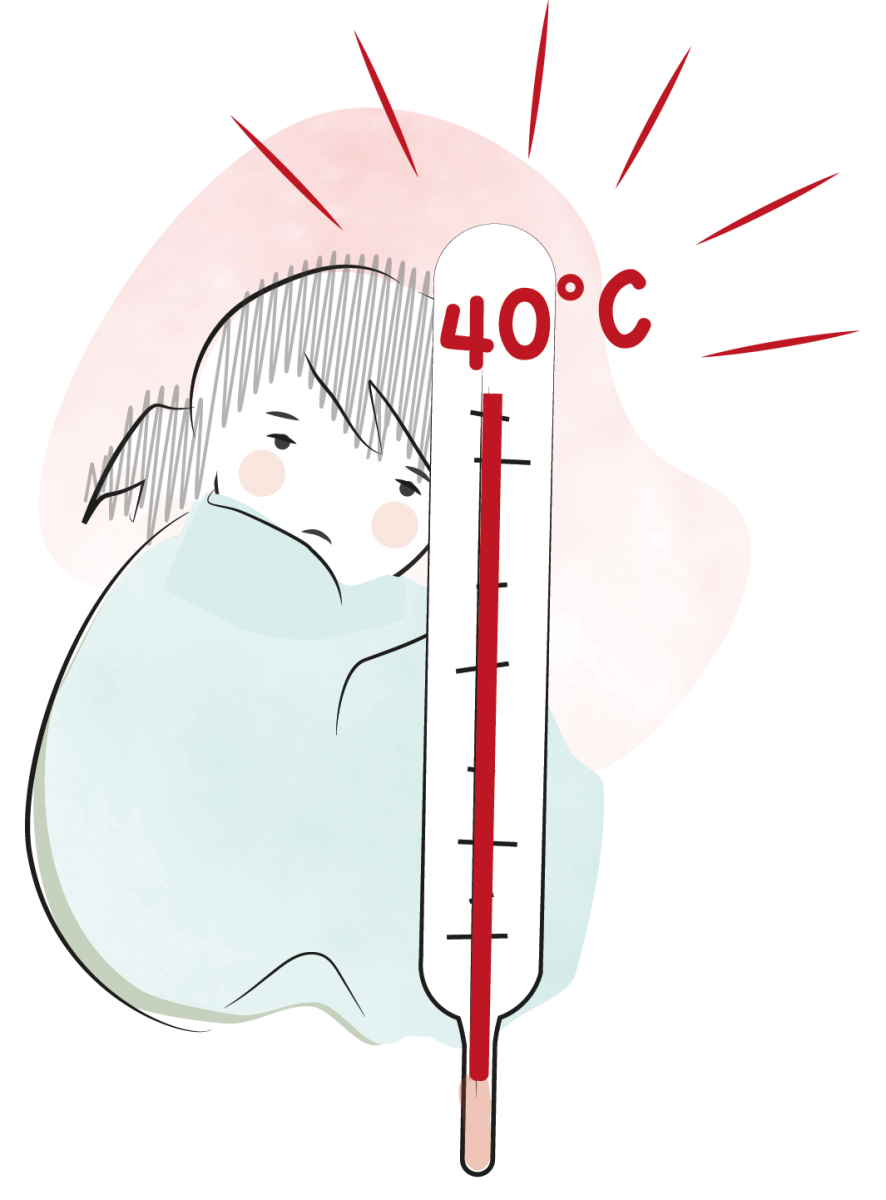Course and stages of natural, optimal fever
The definition of "optimal" fever: Everything that used to be called typical or natural fever with its stages can be classified here. That is, all febrile episodes that are uncomplicated and run their course typically according to cause. From the temperaure curve pattern one can deduce some of the causes: illness, infection. For instance scarlet fever with 5 days of high fever or the three-day fever.
Typical fever curves have the four stages in common:
- The ascent phase
- The peak
- The beginning of the decrease
- Normalization: end of decrease (129)

What physiological changes occur during each phase?
1) In the ascent stage
Heat production increases: muscles become tense, may be accompanied by trembling, shivers, and muscle tremors.
Increased heat retention: small blood vessels in the skin contract, reducing heat release (heat radiation), hands and feet cool, face pale; as sweat secretion decreases, evaporation also decreases.
The end of this phase is usually the most uncomfortable, and may be accompanied by chills, head and muscle pains and malaise.
Don't worry, the fever will soon pass into the next, more bearable stage!

2) During the peak
Heat production and heat dissipation are in balance, as the body has reached its target, optimal, set point temperature.
Heat production is reduced.
Heat dissipation increases: as the temperature of the blood (core temperature) flowing through the thermoregulatory centre is sufficiently elevated, the signalling of the cooling centre expands the skin's vessels (accompanied by flushing), and the skin's temperature elevates again. The skin and limbs of the person become warm.
This stage is well-tolerated by children, they often sleep through it, although they may still have nightmares.
3) In the initial stages of decrease
After the body has maintained body heat for a sufficient amount of time (usually a few hours) to react optimally with the immune system, it begins to "rest" and further reduces heat production.
The heat dissipation will also increase: it will change, the greater part (up to 75 percent) will be evaporation, more precisely sweating. Unlike older children, babies and toddlers don't always sweat.
4) At the end of the decrease, at normalization
The operation of the thermoregulatory centre will increase again.
Heat dissipation decreases.
This creates the new, normal temperature balance.
These four stages may rhythmically repeat for a few days.
After this while recouperating body temperature may even be slightly lower for a couple of days.
The height of the fever is not in proportion to the pathological factors that produced it.
This means that fever height, in and of itself, does not indicate grave illness (in children older than six months). The very same virus may cause in the same child very high fever on one occasion, and on others no fever at all. Low fever may disguise illnesses that have to be taken seriously (pyelitis, for instance); but simple teething may cause very high fever. We discuss these in detail in the chapters „Accompanying symptoms of fever” and „How dangerous is the febrile condition”.
If we hinder the spontaneous course of fever (with medications, for instance), we modify the optimal course. What we are talking about here is not that the child „doesn’t have fever”, but its body would be trying to produce fever – because it would be useful for the run of the illness-, but we have interfered. So if we have reduced someone’s fever through medication, it doesn’t mean that the child has healed, or is healthy.
You can find the corresponding numbered references here: References
Version update: 1 March 2024